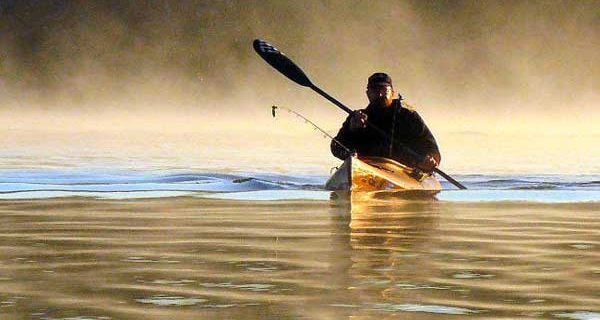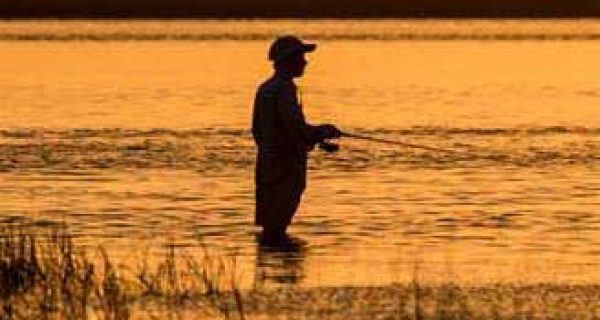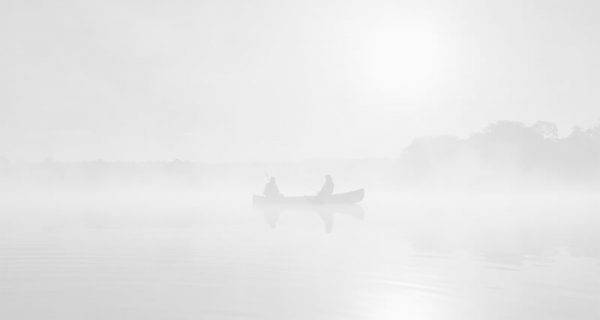
Anatomy of a Kayak
What’s on the inside of a kayak besides a paddler? I will try to describe how kayaks are made and what is different about each method. None of the manufacturing methods are bad, just some are better than others. What are kayaks made of? Kayaks can be composed of several materials, each having their own benefits and detriments. Plastic is the most common material used in kayaks today; however all plastics are not created equal. Some less expensive plastics are brittle and do not weather well, but are used to manufacture less expensive kayaks. A method some kayak manufacturers use is to make the plastic thinner to save cost at the expense of the uninformed consumer. There are handmade kayaks made from a variety of woods and can be very ornate. Wooden kayaks are easily scratched or damaged. Kayak building kits are available offering the buyer the challenge of building his own kayak with custom design options. These kayaks are typically very sleek and are often designed to be used for touring.
The Florida Seafood Festival Celebrates a Golden Anniversary
In 1963, a group of eight men, all members of the local chapter of the Jaycees and Directors of the Apalachicola Chamber of Commerce, gathered together to contemplate what it would take to bring visitors to the town since the new interstate 10 was diverting traffic off the once-well-traveled highway 98 which passed right through the heart of Apalachicola. This wasn’t the first time the town had to find alternatives to boost its economy aft er another major transportation route was diverted away from the town. It happened in the 1800s when the railroad bypassed Apalachicola for Port St. Joe, 23 miles to the west. Both times, as transportation detoured from the town, so did the people and the dollars they might have spent. As fate would have it, Billy Spikes, a young marketing manager with Florida Power Corporation, led the charge to create a Florida Seafood Festival.
Boating Tips From Capt. Brittany
Preventive maintenance can save the life and value of your vessel. Keeping wax on your boat will prevent oxidation and will keep your boat looking new. SaltyNative BoatWorks uses Collinite wax on every boat and vehicle we detail. Collinite has outlasted many other brands we have tried. Make sure your boat beads water off the surface of the gel coat and there is always a shine. It is important to not let the surface become chalky, keep it shiny with wax. Also, bright work, plastics, vinyl and fabrics all need to be protected as well. We use Collinite metal wax or never dull to keep bright work looking good and protected. Not enough time or energy to keep your boat protected and shiny? Give us a call and we will keep your boat looking brand new!
How to Understand the Tides
There are several factors involved that allows you to be at the right place at the right time. And knowledge of the tides is definitely a critical one. Knowing how to read a tide chart and how to make it relevant to your area, fish species, and time of year are crucial to your inland fishing success. Tides are the natural movement of saltwater or the rise and fall of the water level. There are several factors that affect tides, including the moon, time of year, wind and landmasses.
Herb Roasted Red Snapper
CHEF DAVID CUNNINGHAM Native to south Louisiana, David Cunningham grew up in a family of great cooks in Baton Rouge. …
Chef Andi Bell Wows Diners at Boshamps
Andi Bell, head chef at Boshamps Seafood and Oyster House in Destin, has loved to cook his entire life, and he’s really, really good at it. Born in Mountain Brook, Ala., Bell split time growing up between Mountain Brook and Destin. So after he graduated from the Florida Culinary Institute with top honors, and an entire year early, he quickly headed back to the home of his childhood summers.
Museum Presented Check by Destin Charter Boat Association
The Destin Charter Boat Association presented a check for $3,000 to the Destin History & Fishing Museum. The Destin Charter Boat Association has long been a supporter of the Museum. Helping to fund new exhibits such as the display unit for the "Destin Captains' Wall of Fame", lend volunteer help whenever needed and promote the museum's mission statement. The mission of the Destin History and Fishing Museum is to preserve Destin's history by stimulating interest in and understanding of the Village of Destin, its history and its fishing and tourism industries, through experiences that educate and inspire.
